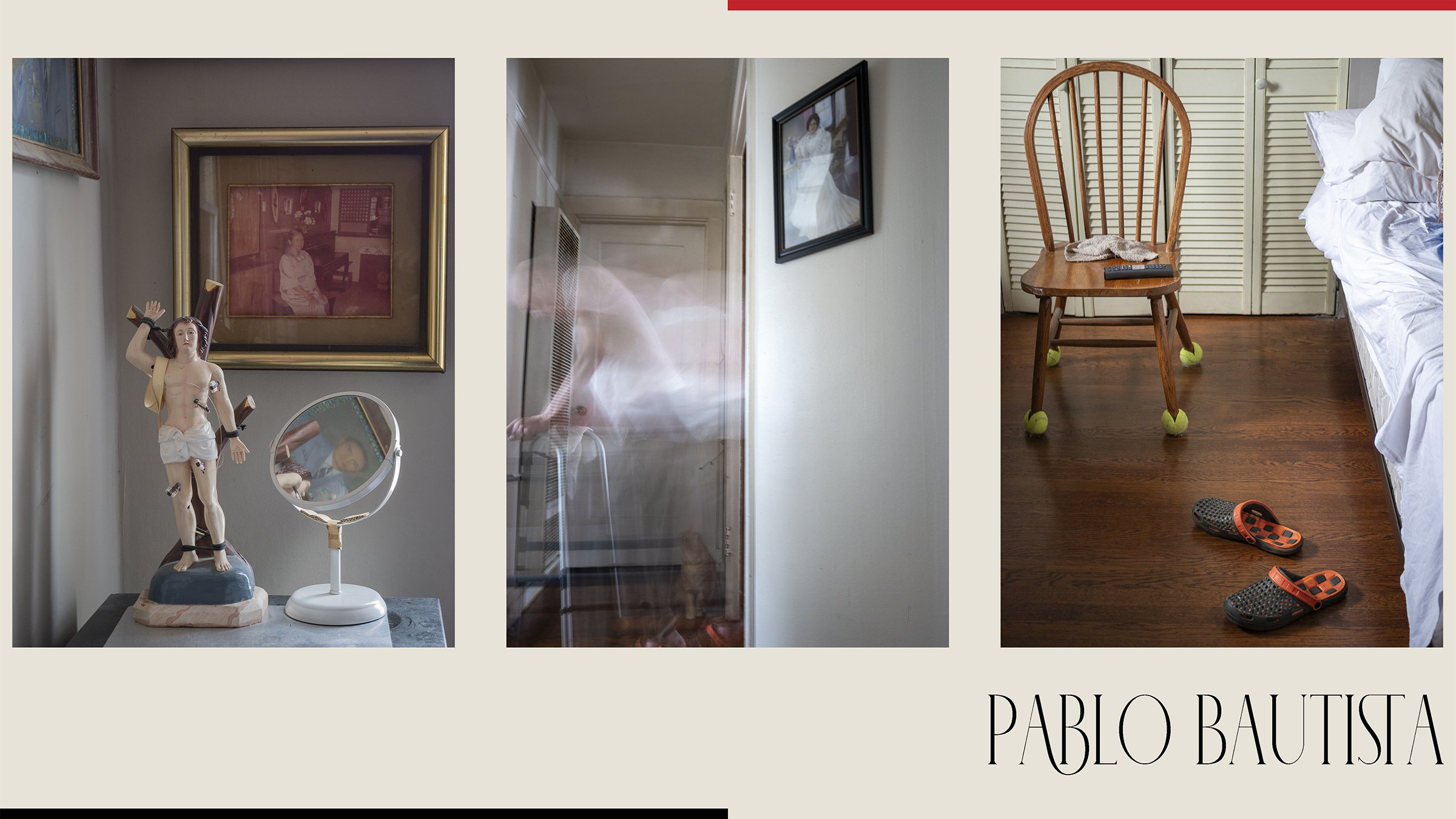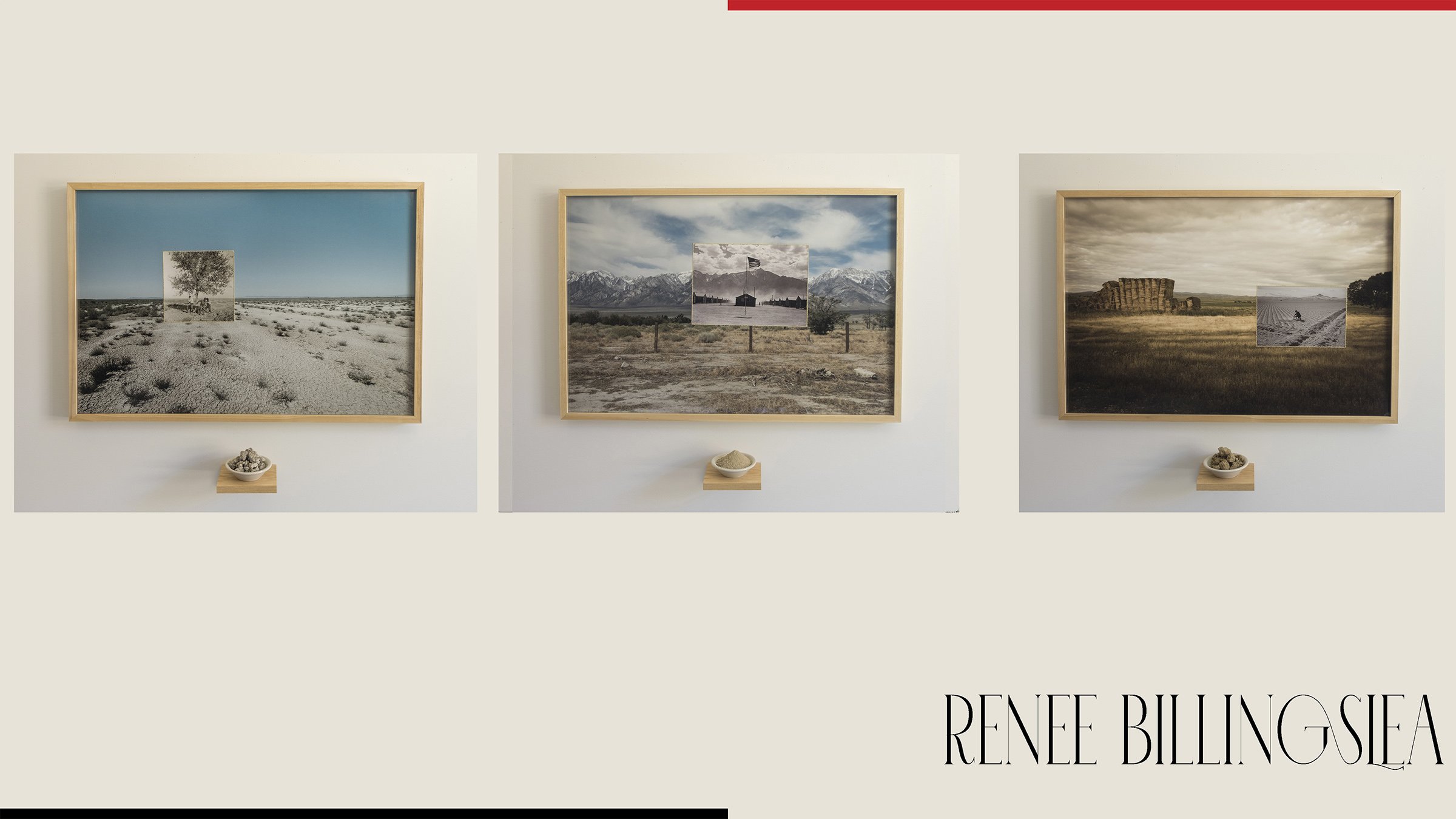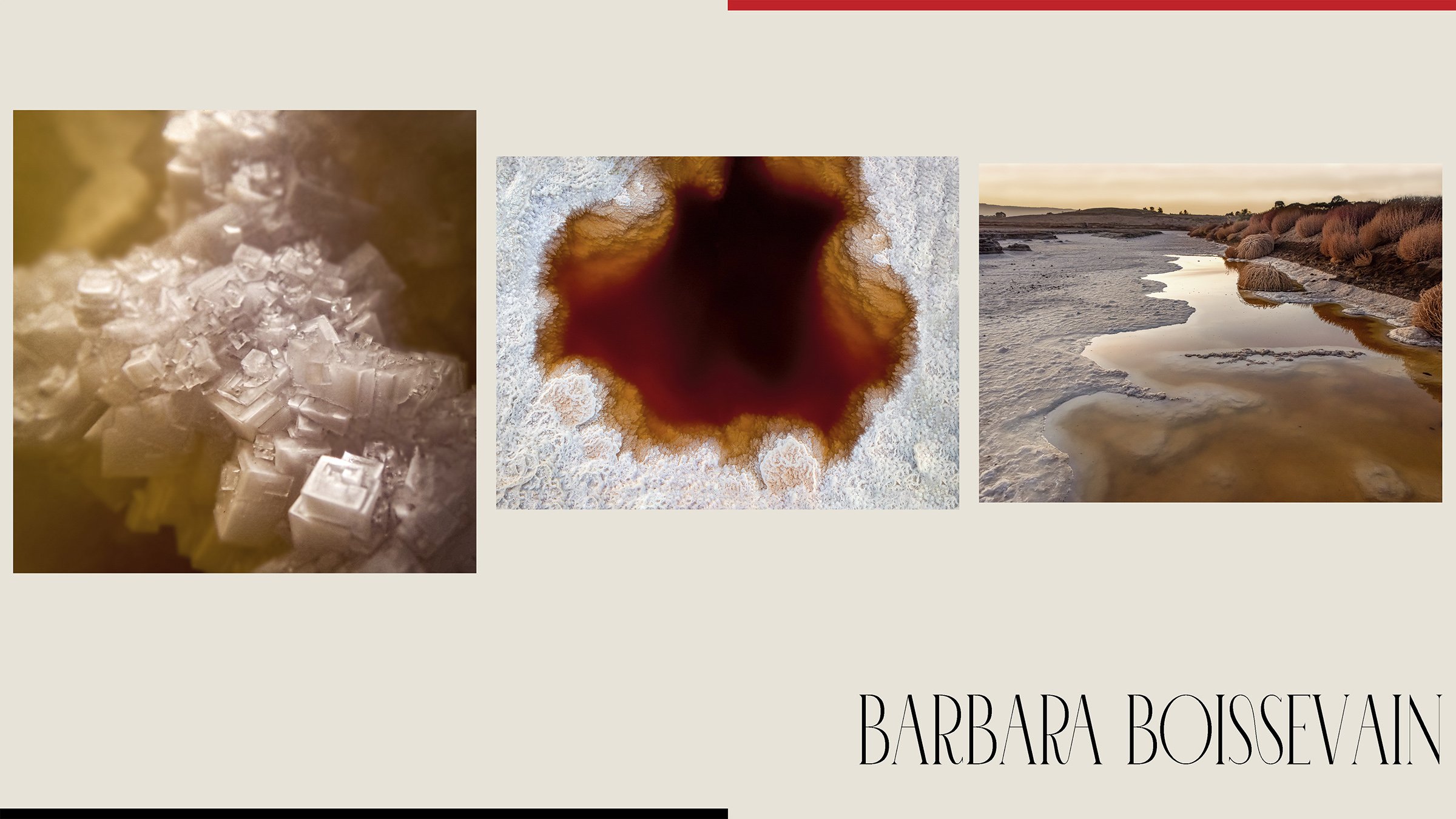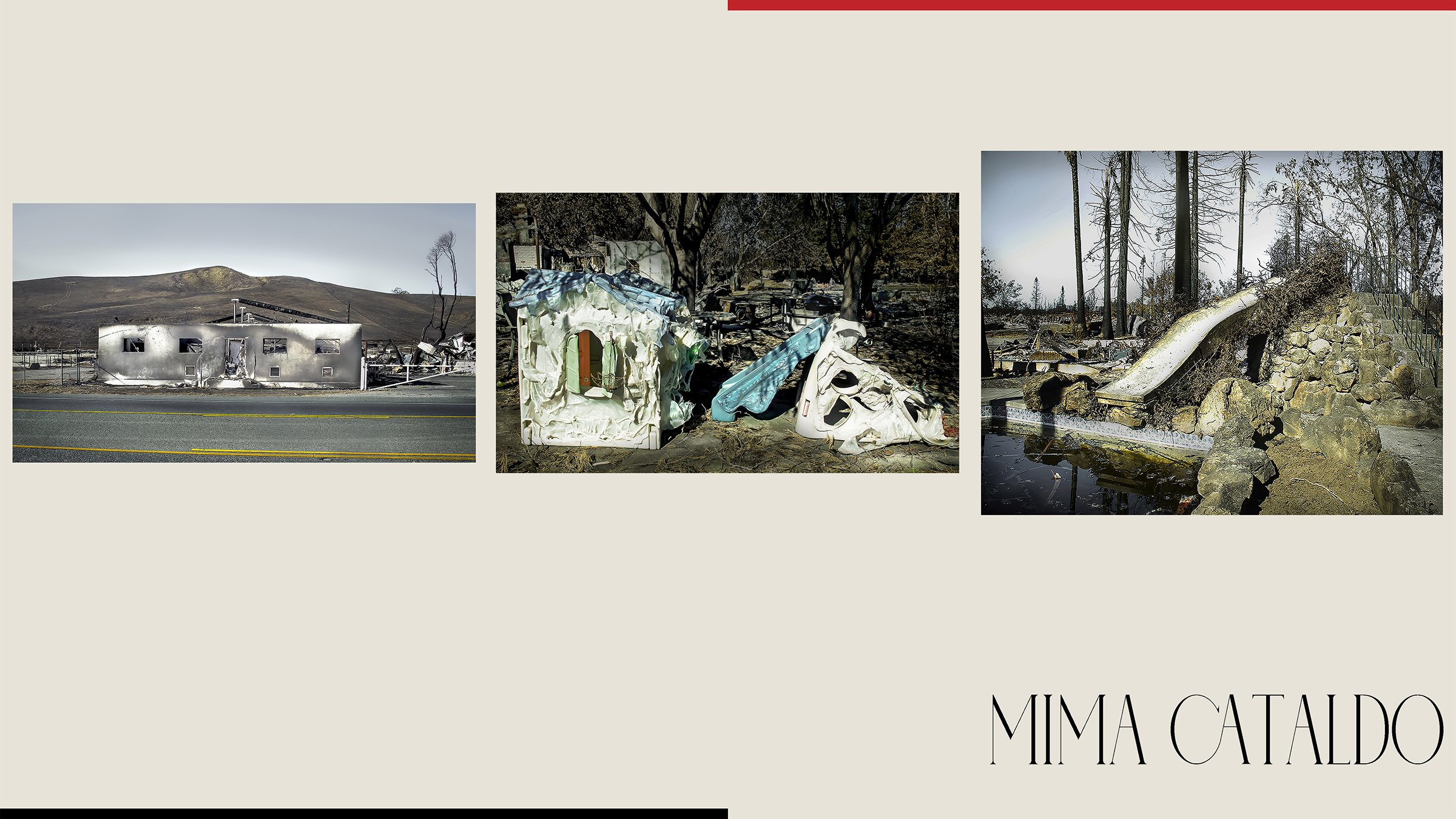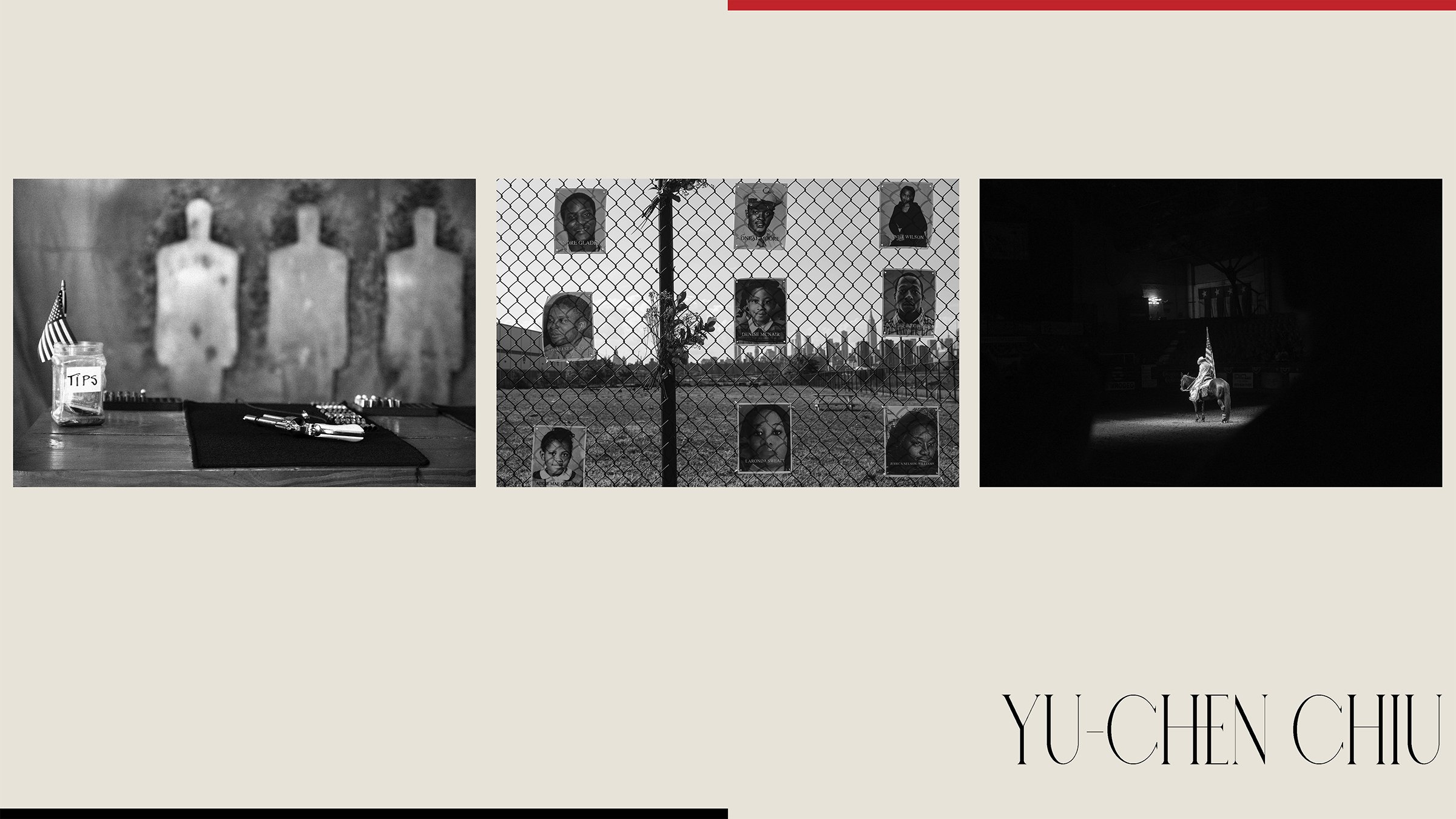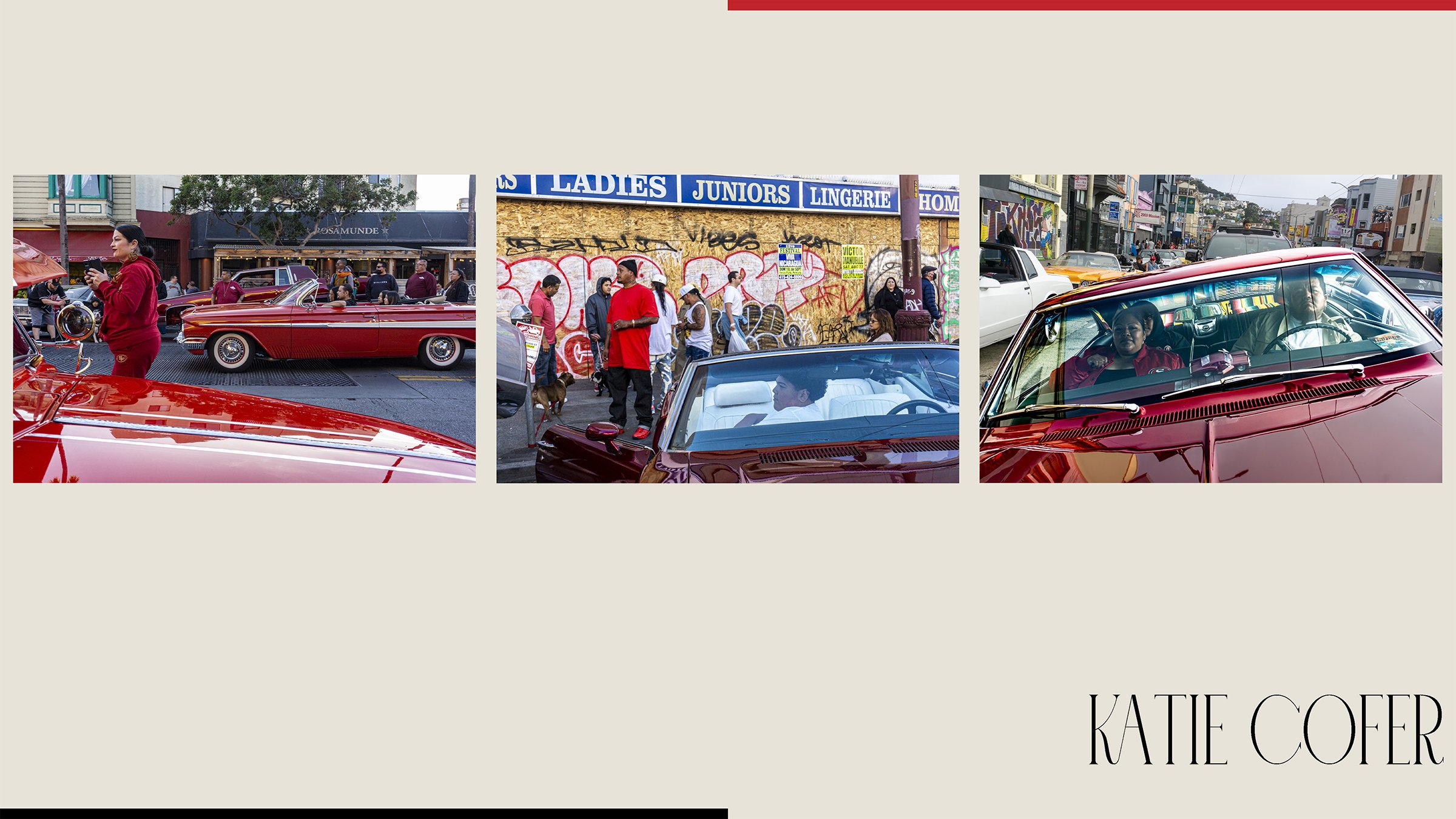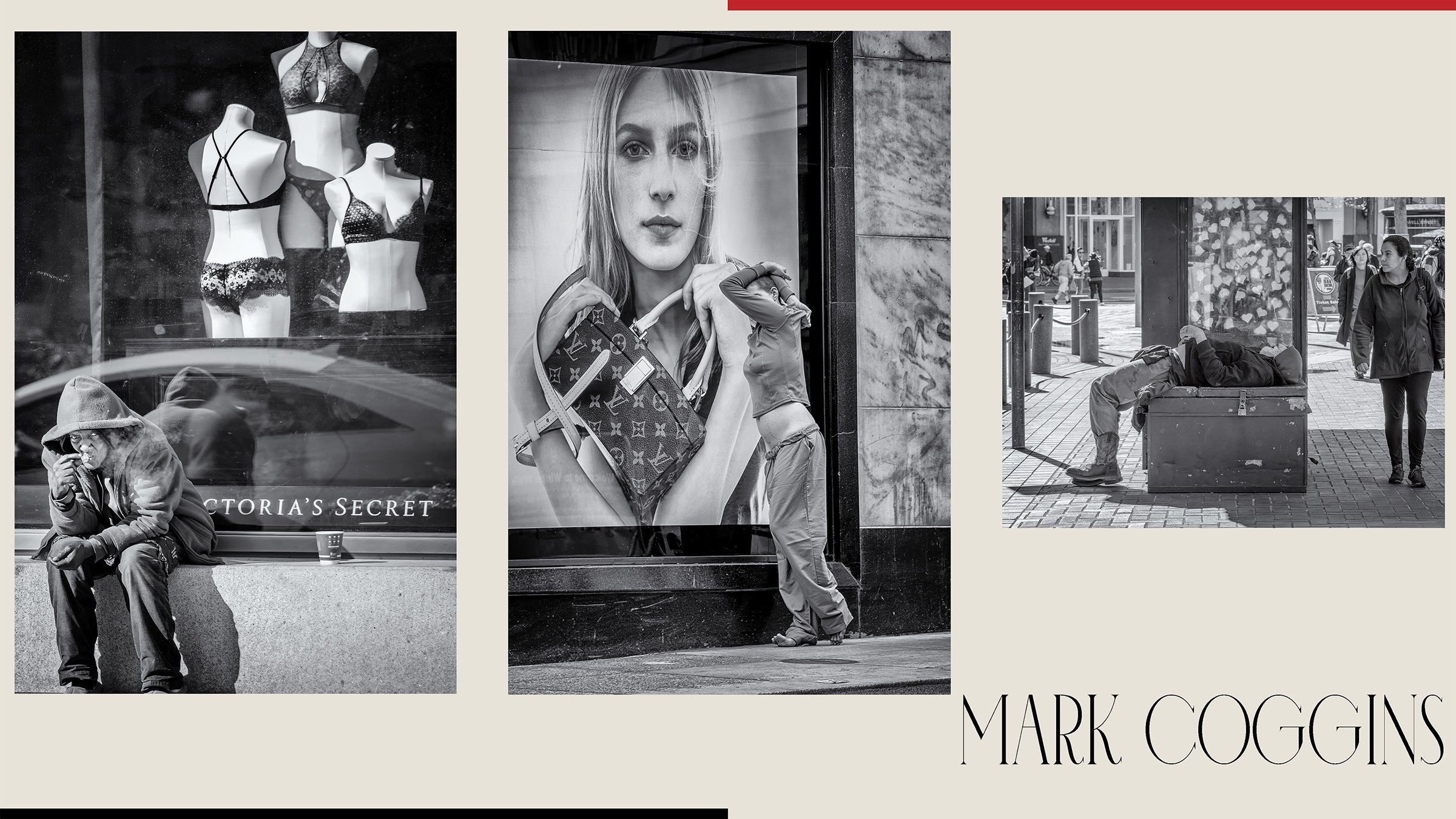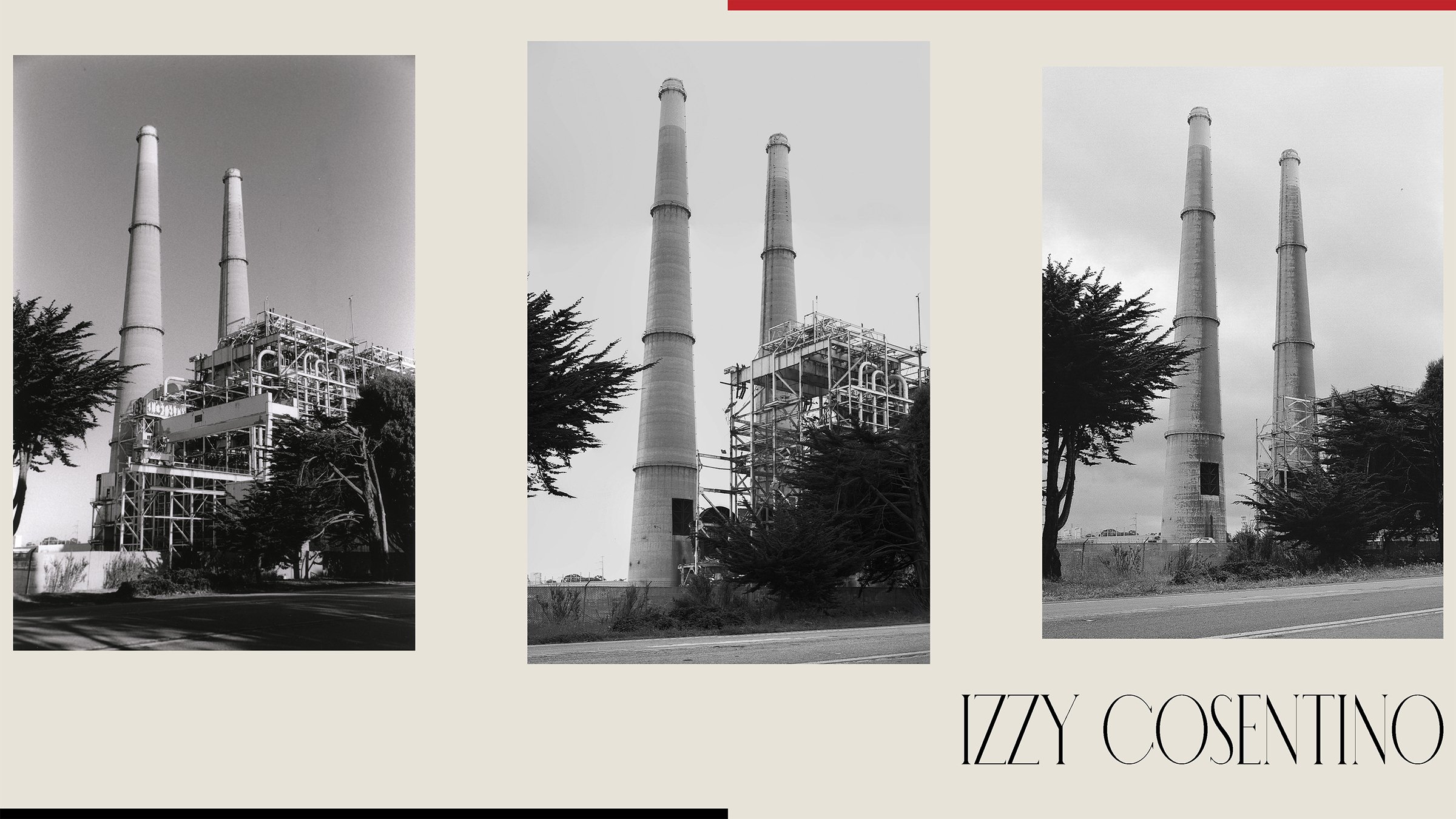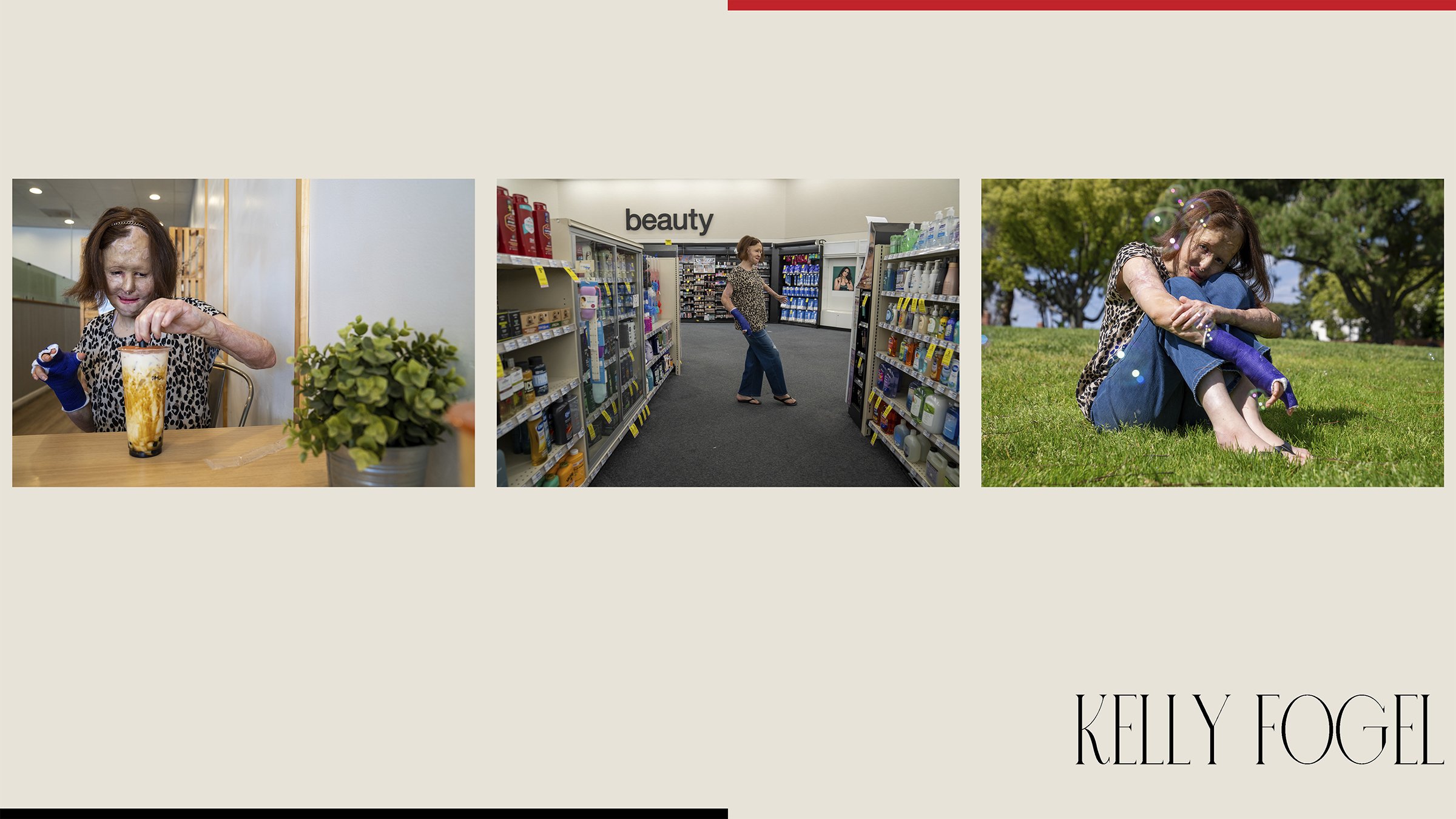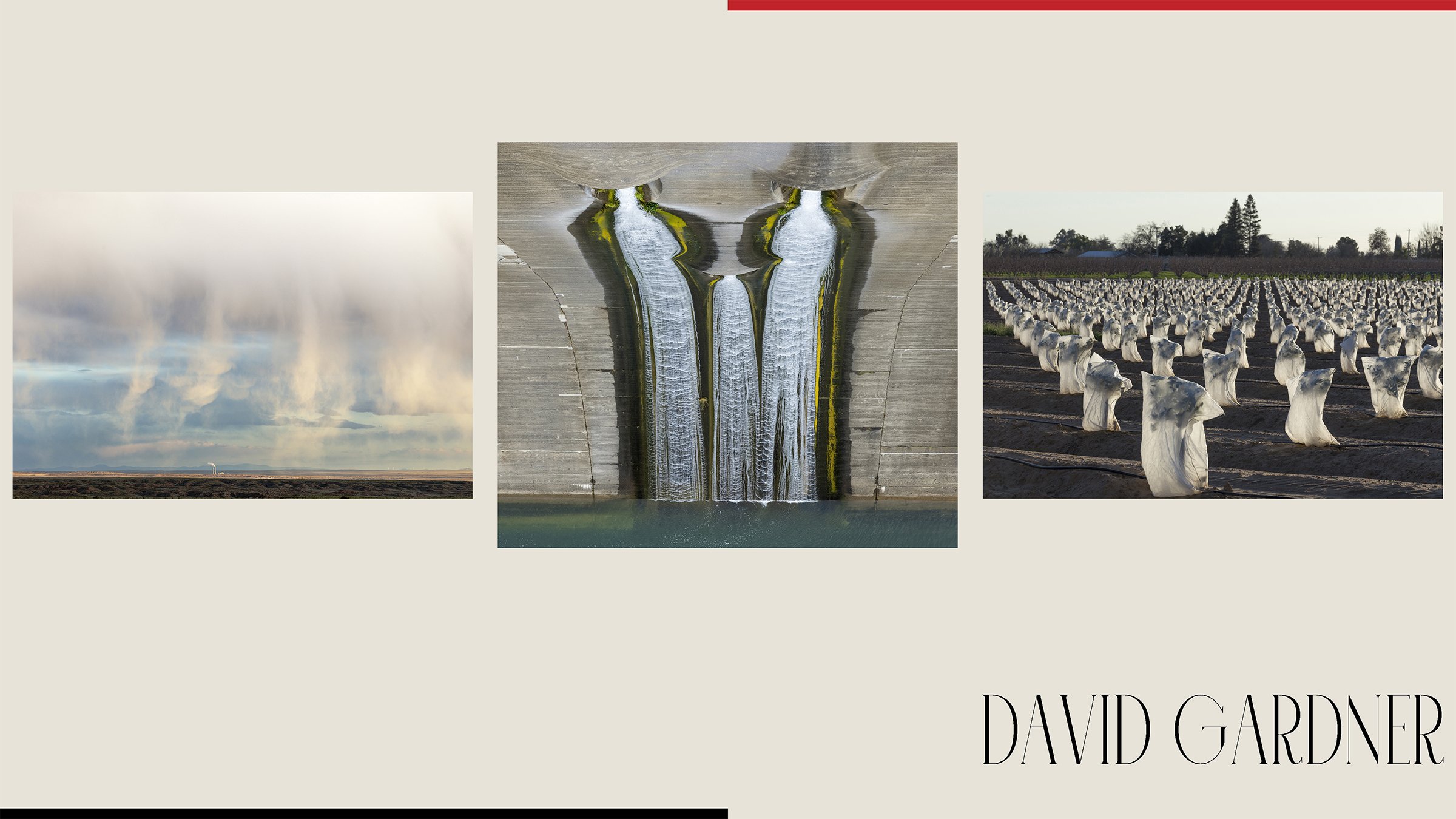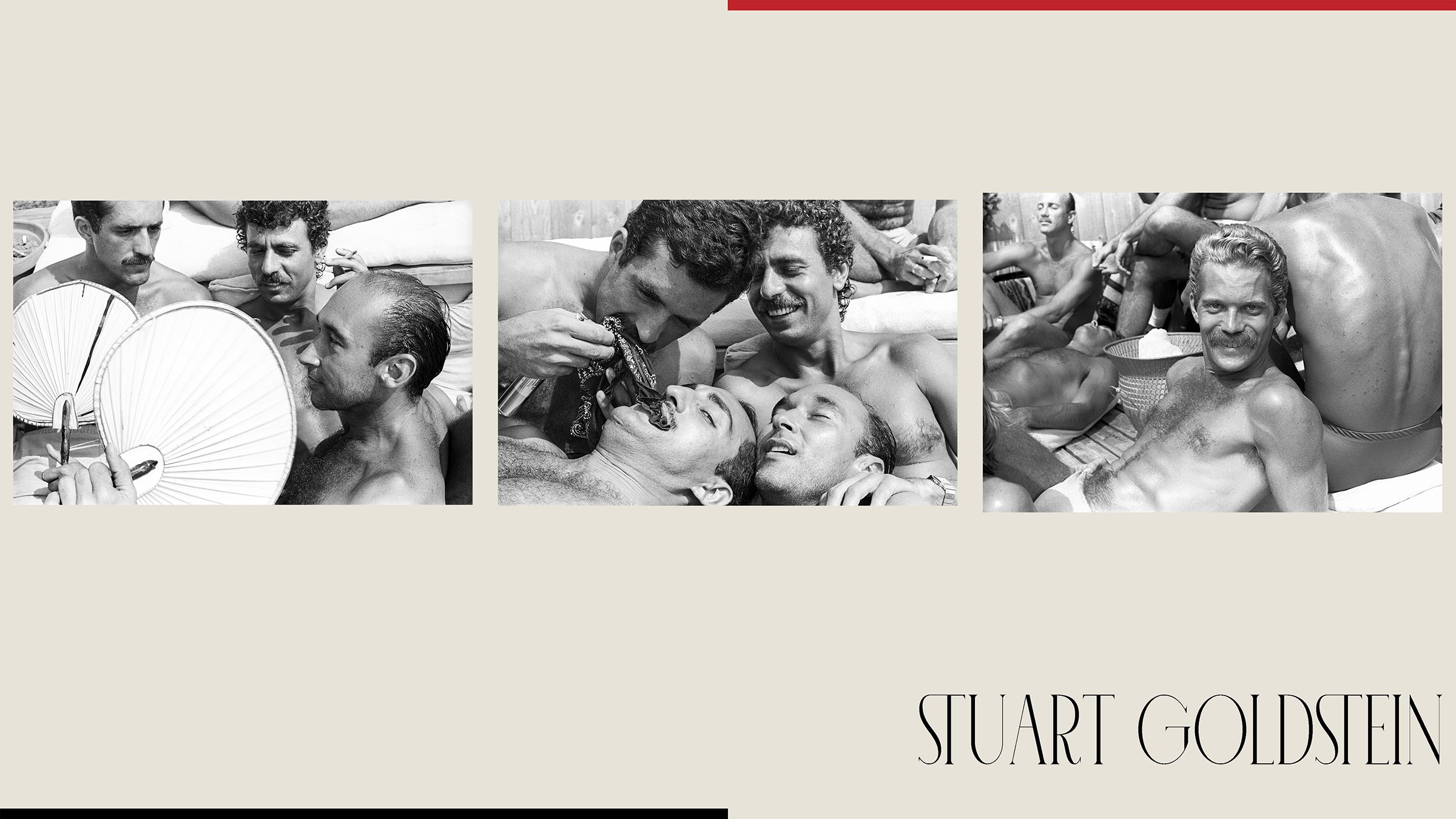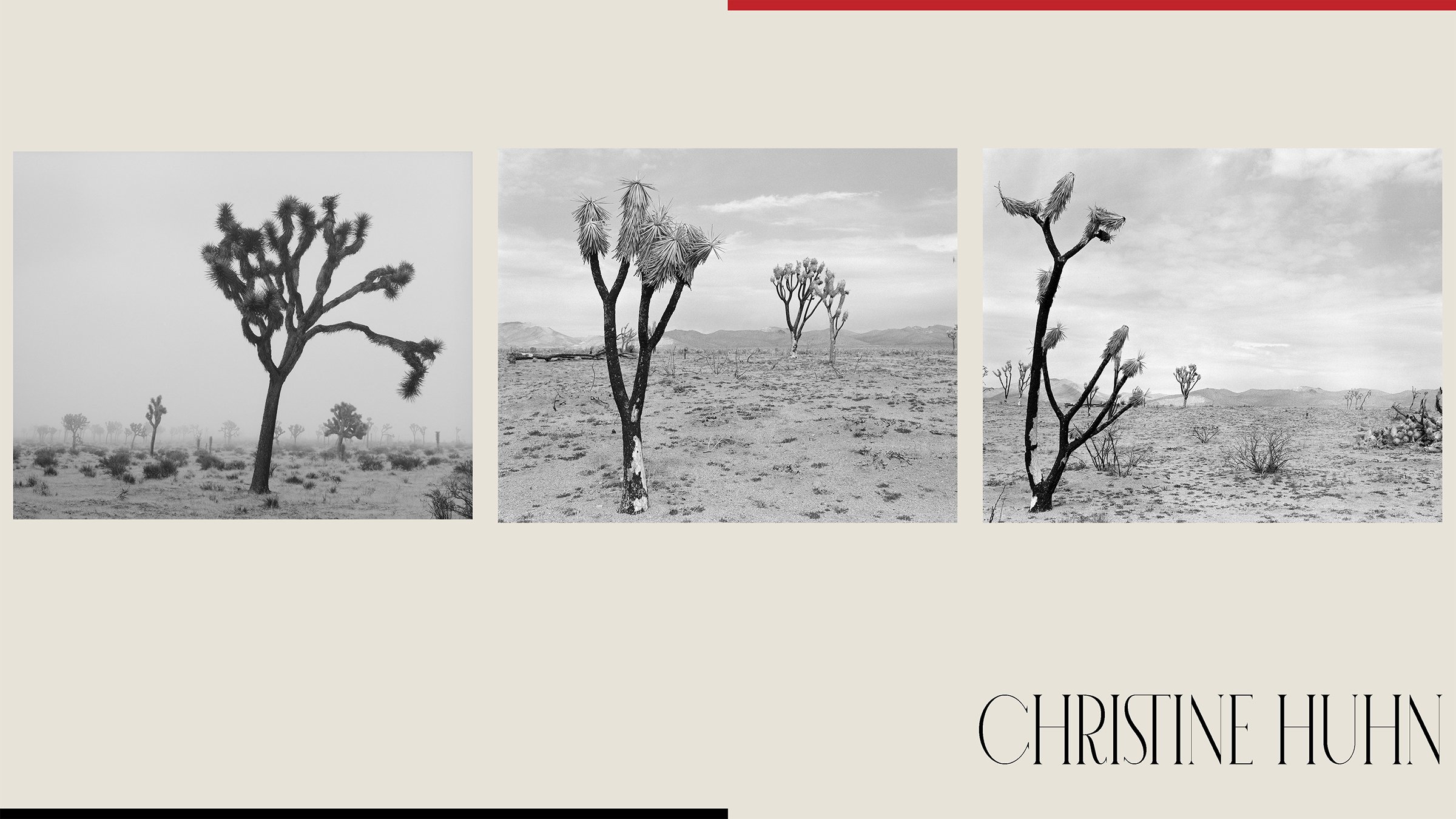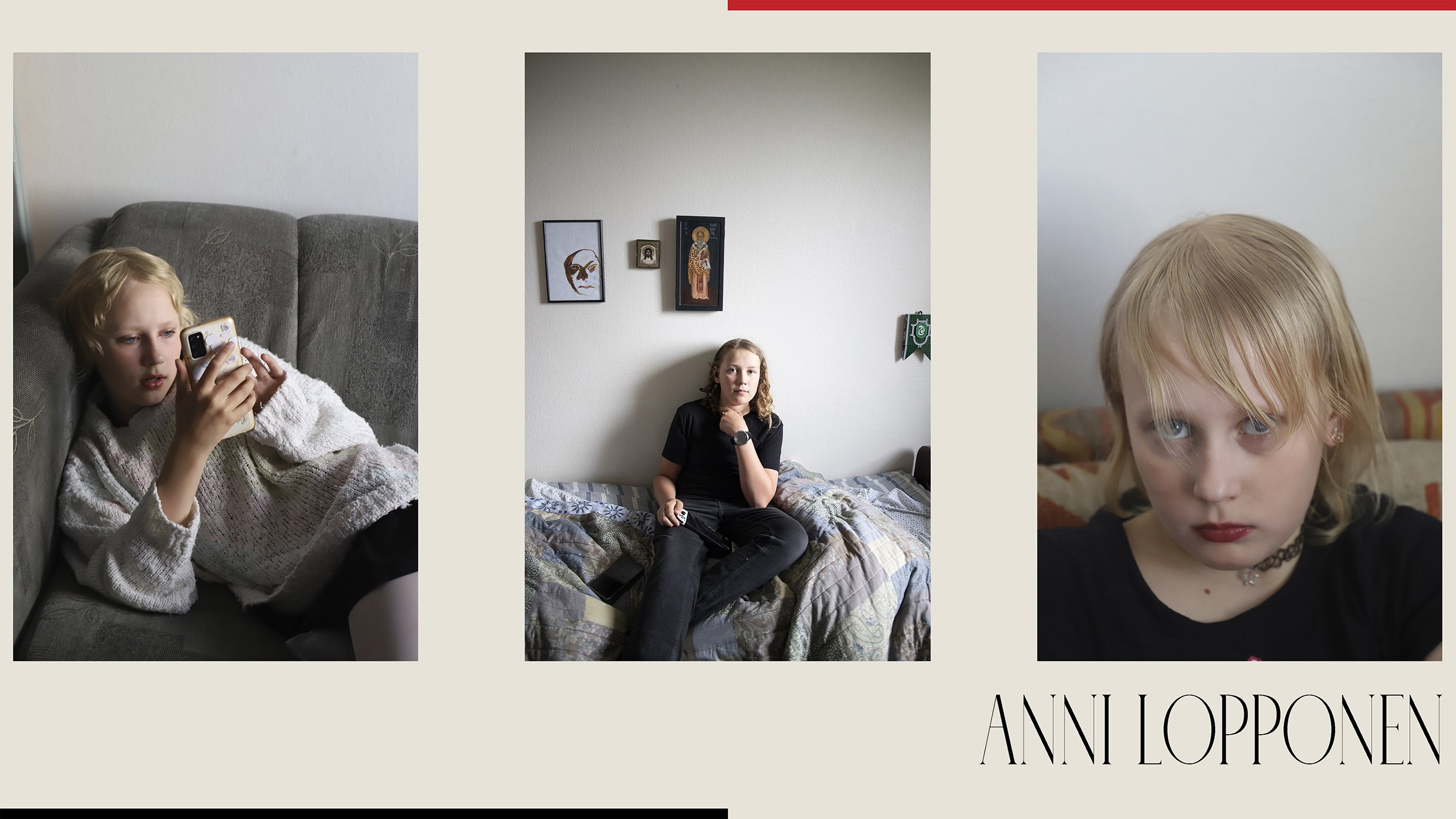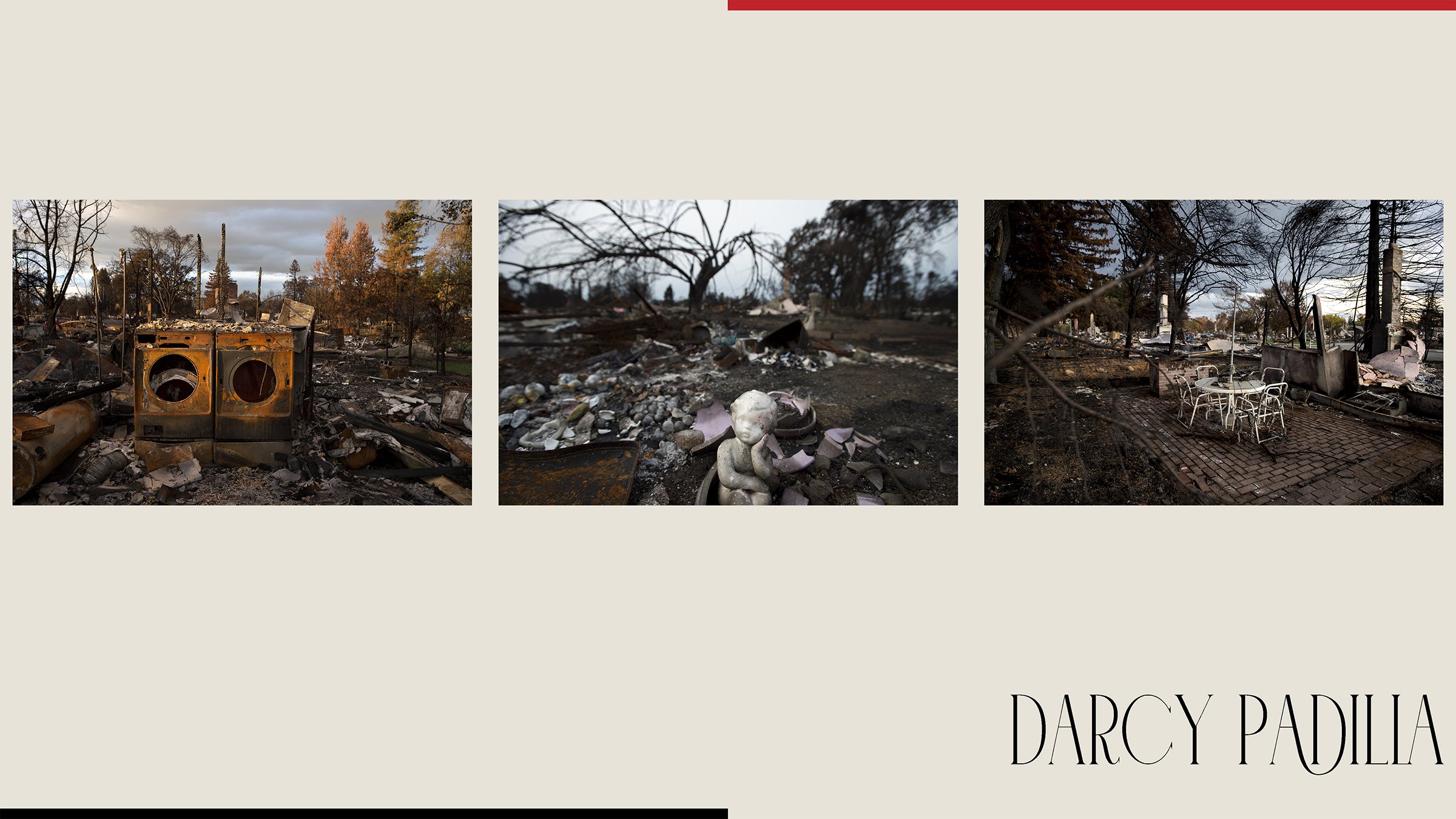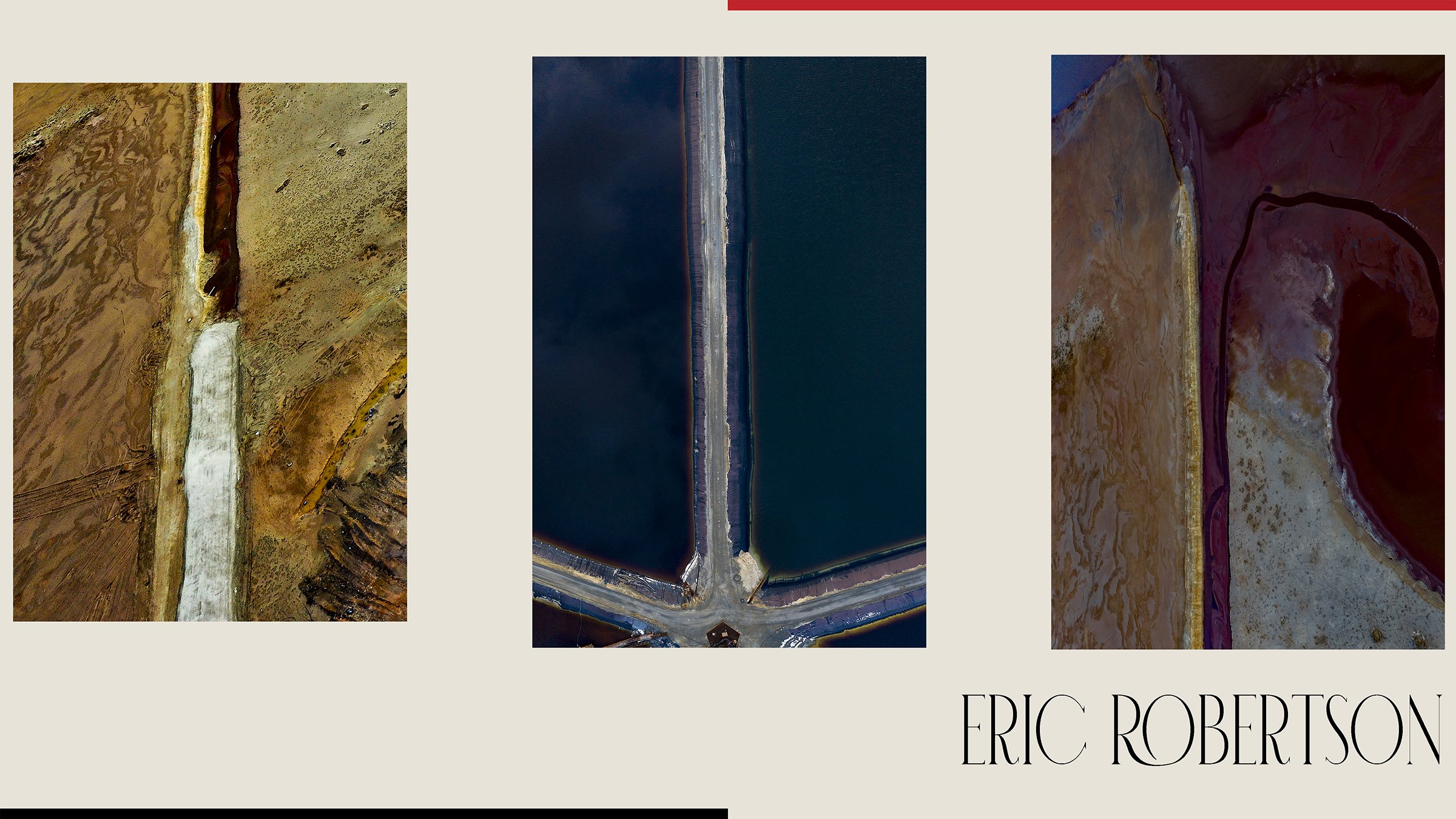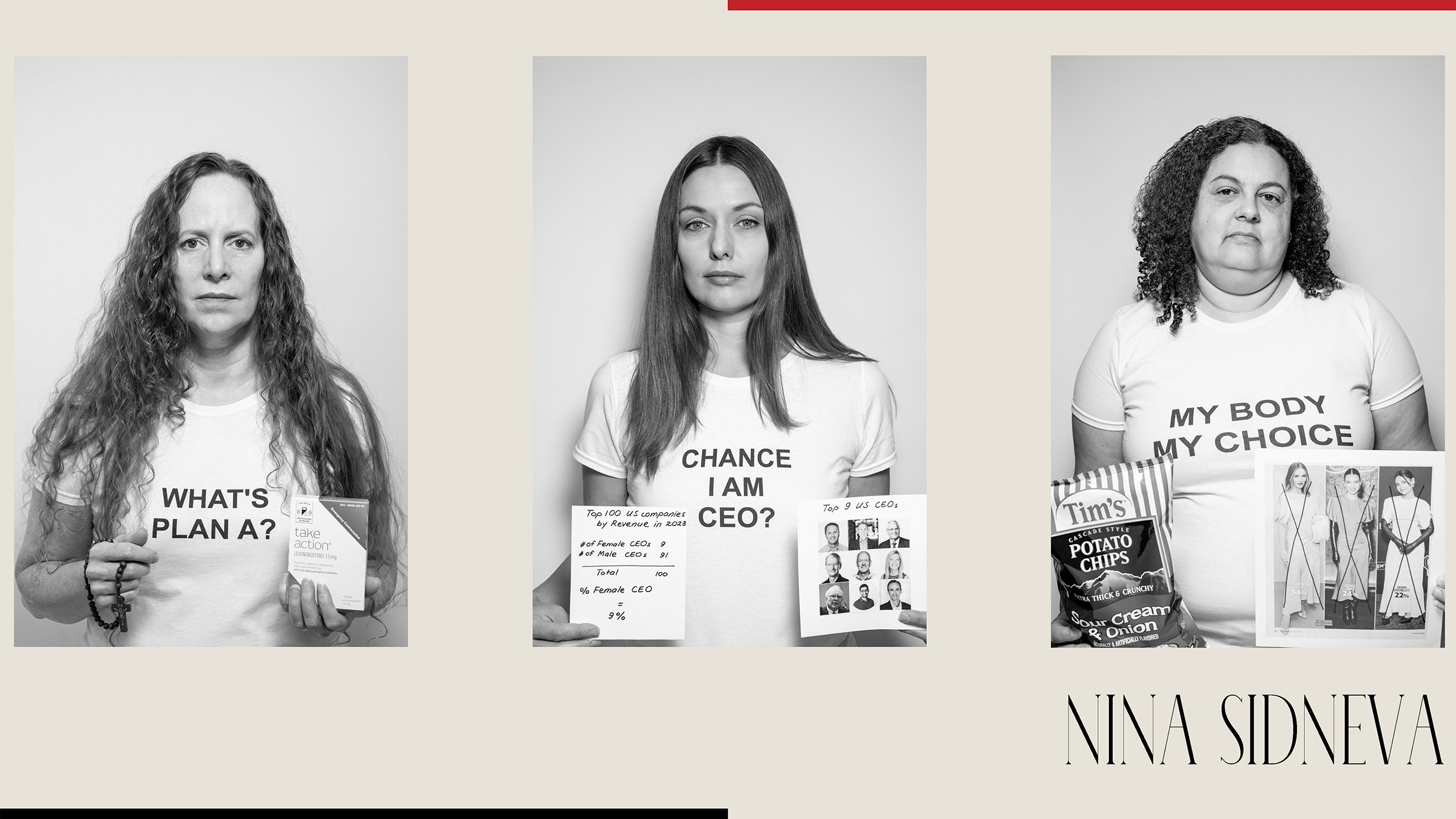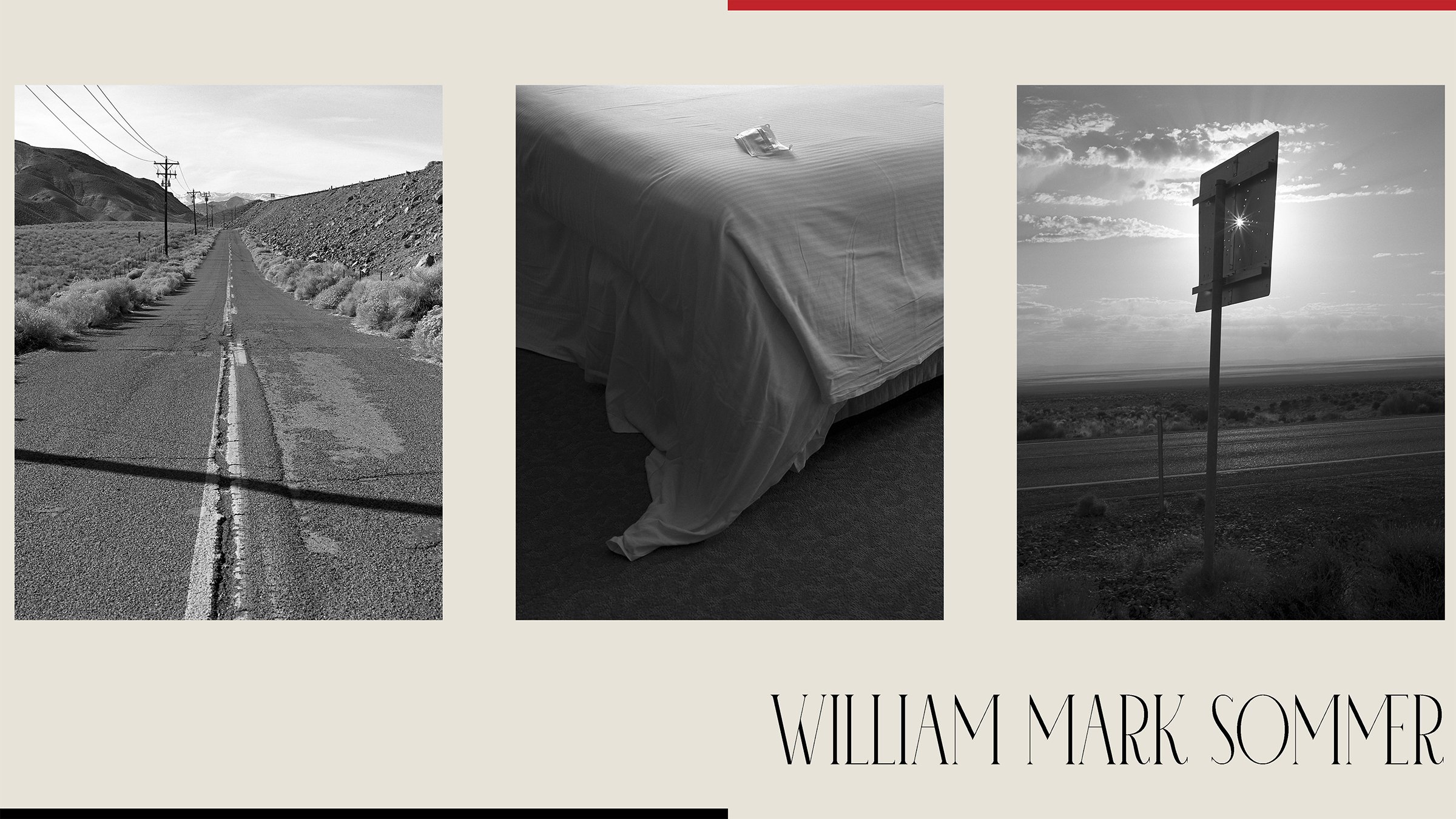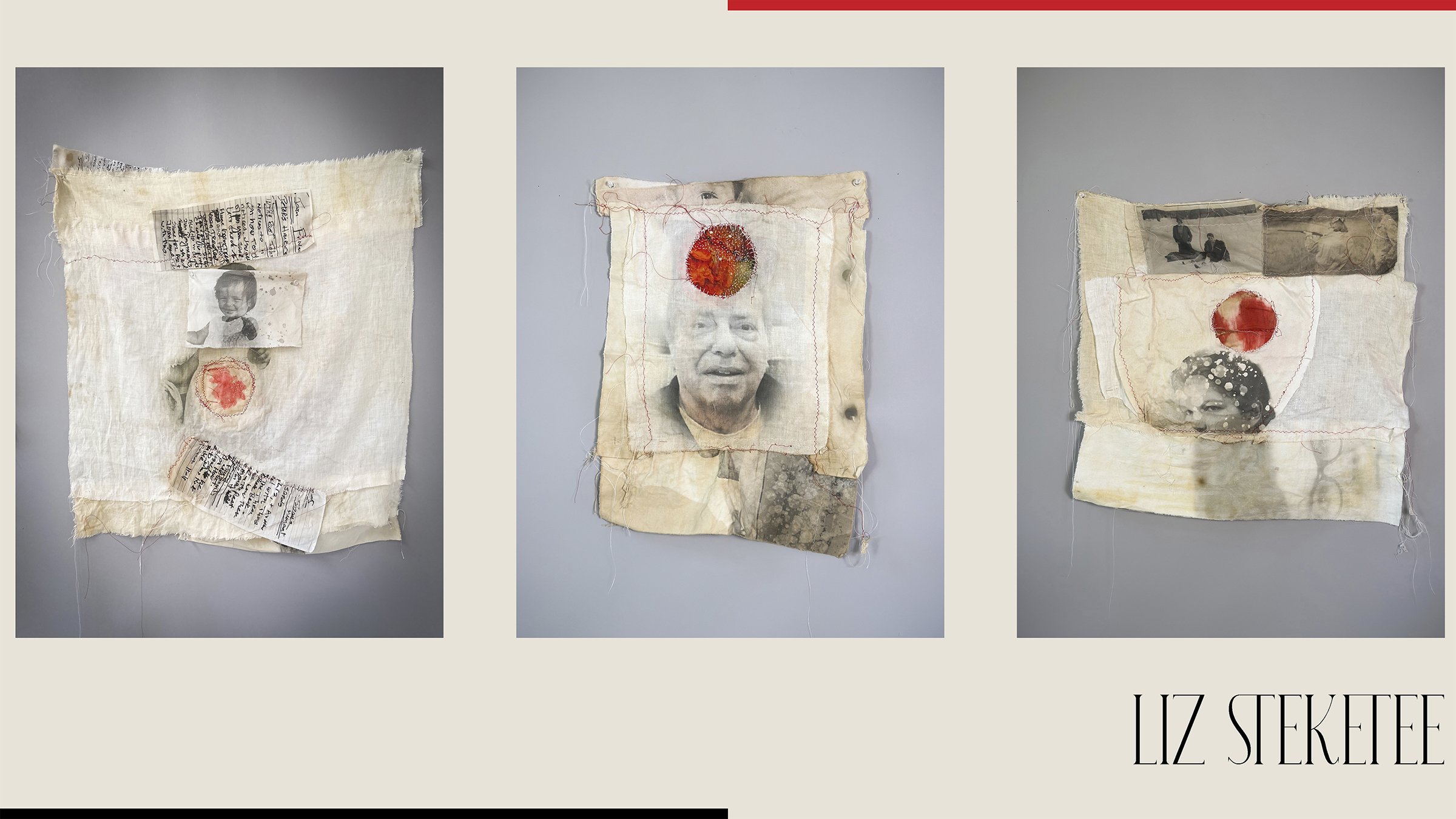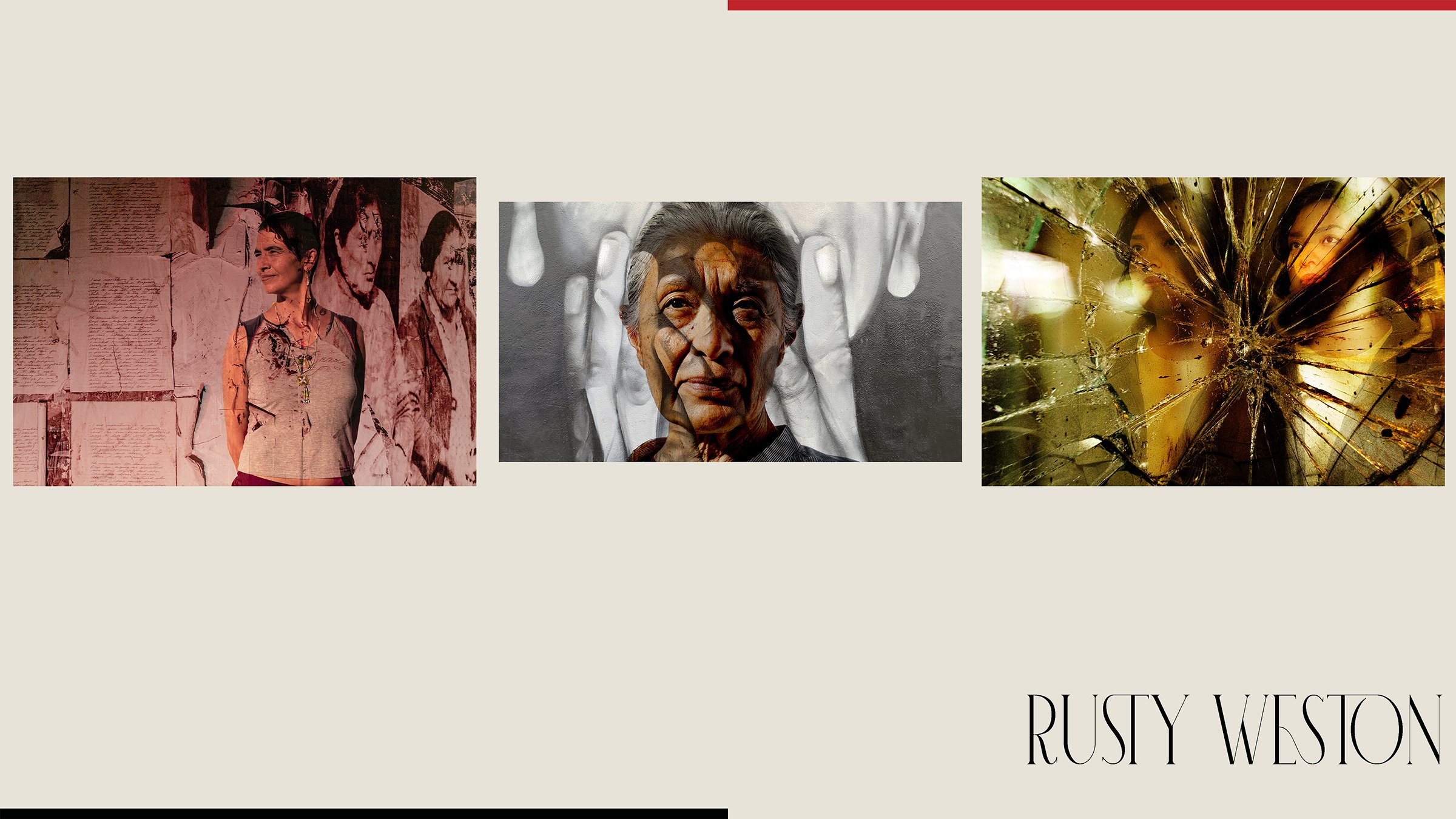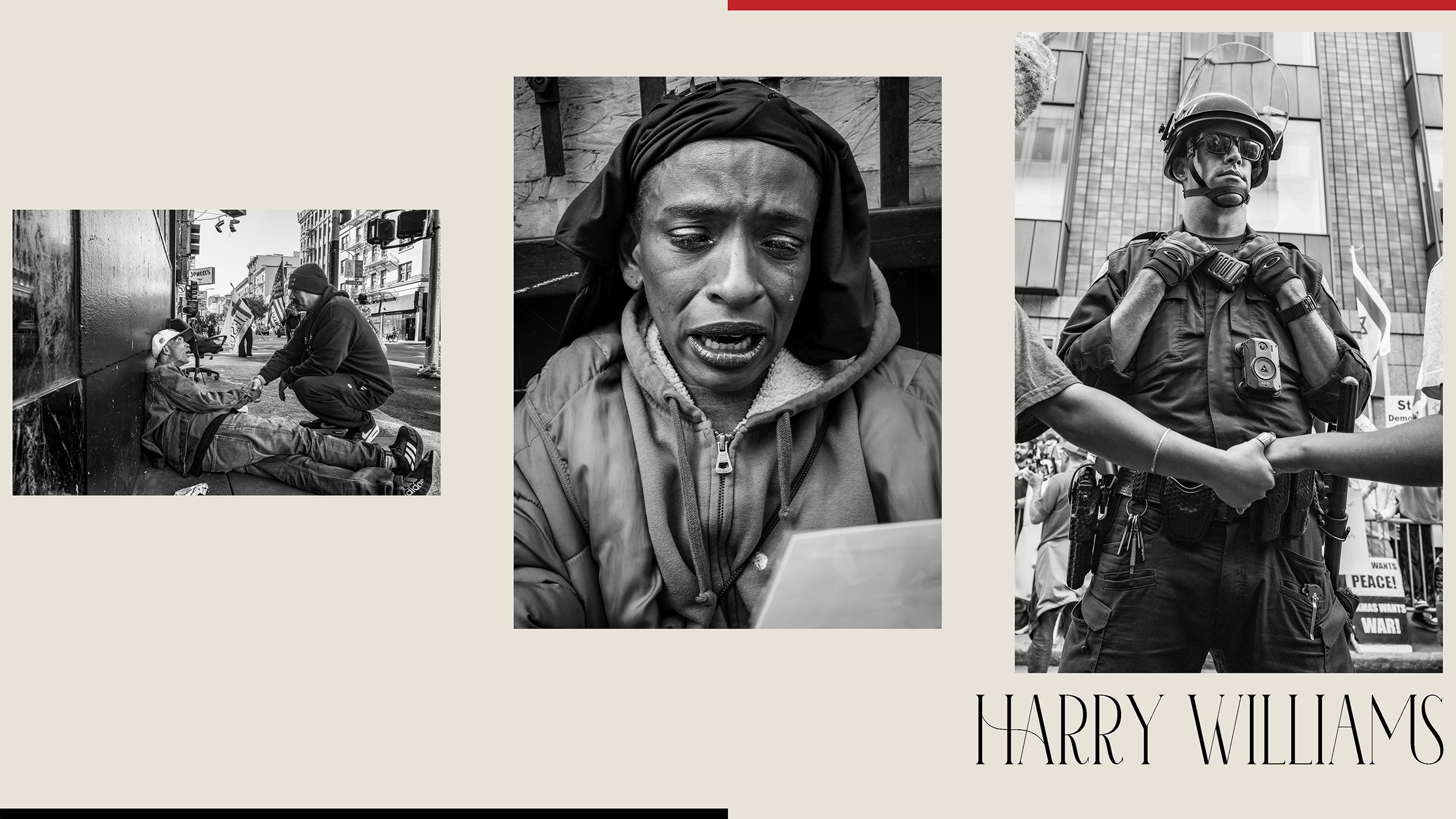METAPHORS OF RECENT TIMES
A DIALOGUE OF THE PERSONAL, THE POLITICAL AND THE CULTURAL
Produced in partnership with the San Francisco Arts Commission (SFAC) Art in City Hall program and PhotoAlliance
Juried by Linda Connor, Beth Waldman, and Lewis Watts
Curated by Beth Davila Waldman
Thursday, January 16 - Friday, August 1, 2025
Opening reception: Thursday, January 16, 2025, 5:00 P.M.
San Francisco City Hall, Ground Floor and North Light Court
1 Dr. Carlton B Goodlett Place, San Francisco, CA 94102
Hours: Monday - Friday, 8:00 A.M. - 6:00 P.M.
Free and open to the public
PABLO BAUTISTA
(from left to right)
San Sebastian, 2024
The Passage, 2024
Tsinelas (Sandals), 2024
Archival pigment print
Courtesy of the Artist
Project Statement:
“All photographs are memento mori*.” Susan Sontag
Traditionally, adult Filipino children are expected to take care of their aging parents. I am no exception even though I have been living in America since I was seven years old. It was during the pandemic when I became my father’s caregiver. The tables had turned: the child now became the parent and vice versa. Every day I observed my dad struggle with his mobility, his memory, and his physical decline. I took up digital photography in order to keep my aging dad alive and present in my memory. Ultimately, living with my dad made me confront my own mortality. In my series, LIFE WITH DAD PORTRAITS, I use the medium of photography to explore my own relationship to memory and death in order to help me lead a fuller, richer life.
*Memento mori is Latin for “remember you will die"
Artist Bio:
Pablo Tapay Bautista is a Filipinx-American artist based in Oakland, CA. He holds an MFA in film from Columbia University. His photographs explore the beauty in the mundane and in the unexpected. For him, photography expands our vision of the world and connects us to one another.
His full submitted bio: "I didn't choose photography; photography chose me. The practice of looking through the viewfinder to frame the world I want to represent forces me to live in the moment. Currently, I make street and photojournalistic-type photography to capture the life of my surroundings."
Pablo Tapay Bautista is a Filipinx-American artist based in Oakland, CA. He holds an MFA in film from Columbia University. His photographs explore the beauty in the mundane and in the unexpected. For him, photography expands our vision of the world and connects us to one another.
Renee Billingslea
(from left to right)
Heart Mountain, Wyoming, 2021 (Inset by Hikaru Iwasaki, March 10, 1944)
Topaz, Utah, 2021 (Inset by Tom Parker, October 16, 1942)
Manzanar, California, 2021 (Inset by Dorothea Lange)
Archival digital prints, stitching with gold thread
Courtesy of the Artist
Project Statement:
Most people know of Manzanar, one of the prominent locations where 120,000 Japanese Americans were unjustly imprisoned in concentration camps during World War II. In part, Manzanar is well known due to having been documented by Dorothea Lange and Ansel Adams. The other nine camp locations are less known, creating an incomplete picture of a significant chapter in American history.
The three photographs presented in this exhibit are a selection from a larger photographic installation, American Soil: Ten Japanese American Concentration Camps, that explores all camp locations in California, Colorado, Arizona, Wyoming, Idaho, and Utah. The main focus of the installation is the land. Each site spans hundreds of acres and still shows the scars and remnants of the injustices that Japanese American citizens faced, such as the required cultivation of desert soil to grow food and raise animals needed for themselves and for other camps, with no reciprocity from it then or today.
In this series, Billingslea combines her photograph with an archival image. Both are hand-stitched together using gold-colored thread to reference the Japanese practice of Kintsugi (Kin- su gee), repairing a broken ceramic vessel with gold and preserving it through beauty and disguise.
Artist Bio:
Renee Billingslea is a Teaching Professor of Photography at Santa Clara University. Research and an interest in photographic archives are at the heart of Billingslea's creative process. Her art practice incorporates material culture, inviting viewers to gain greater awareness and insight through viewing her artwork. Billingslea is a committed storyteller who challenges perceptions and provokes essential conversations about historical truths.
Barbara Boissevain
(from left to right)
Salt of the Earth, Alien Saltscape IX, 2023
Salt of the Earth, Alien Ravenswood IX, 2020
Salt of the Earth, Alien Ravenswood XIII, 2021
Archival pigment print
Courtesy of the Artist
Project Statement:
In my photographic series, Salt of the Earth, I use a vivid and abstract visual language to examine the impact of human activity on the environment. Salt Ponds have been a long-standing feature of the San Francisco Bay since the 1800s. By shifting my perspective and employing aerial, ground-level, and underwater macro photography, I capture the multifaceted reality of these landscapes. These images not only document the ongoing efforts to restore wetlands but also reflect the broader quest to rejuvenate the Bay’s natural biodiversity.
These images reveal human incursions in the landscape resulting in complex geometries and artifacts due to the limited biodiversity. This is evidenced by the apocalyptic oranges, reds and purples where only two organisms can survive in this man-made, high salinity environment: anaerobic algae that produce carotenoids and a brine shrimp species unique to the San Francisco Bay. My ultimate goal in the creation of this work is to raise awareness about the miraculous power of nature to regenerate and renew, as well as the crucial need to protect our natural spaces as climate change transforms our coastal communities in the coming decades.
Artist Bio:
Barbara Boissevain is a California-based contemporary visual artist and photographer whose work focuses on the impact of human activity on the environment. She studied painting at Parsons School of Design in New York before immersing herself in photography, earning a BFA from the San Francisco Art Institute and an MFA from San Jose State University. Her work has been exhibited in solo and group exhibitions throughout the United States and Europe. Her book “Salt of the Earth” was published by Kehrer Verlag in Fall of 2023, and was chosen as one of Wired Magazine’s best photo books of 2023. Boissevain’s photographs are in numerous public and private collections, including the Smithsonian National Air and Space Museum, Washington D.C.; the Google Corporate Art Collection, Sunnyvale, CA; and the De Pietri Artphilein Foundation, Lugano, Switzerland.
Kennedi Carter
Ridin’ Sucka Free (Boley Rodeo), 2024
Archival pigment print
Courtesy of the Artist
Project Statement:
Ridin’ Sucka Free is an exploration of Black life through the lens of horsemanship and ecology, tracing cultural threads often left untold. This series began as part of conversations about the legacy of Black cowboys. Long before any recent resurgence in popular culture, Black cowboys played a central role in shaping the American West.
Ridin’ Sucka Freeis an ongoing project that documents the experiences of Black cowboys across cultures and borders in the Americas, focusing on those who still use horsemanship and agricultural practices as a means of liberation. This series seeks to give visibility to these lives and narratives, re-centering their contributions in a contemporary landscape that has often overlooked them.
Artist Bio:
Kennedi Carter is an artist and photographer, currently based in the American South. A Durham, North Carolina native by way of Dallas Texas, Kennedi Carter is a visual artist with a primary focus on Black subjects. Her work highlights the aesthetics & sociopolitical aspects of Black life as well as the overlooked beauties of the Black experience: skin, texture, trauma, peace, love and community. Her work aims to reinvent notions of creativity and confidence in the realm of Blackness.
Mima Cataldo
The Fires of Sonoma Country, 2017
Archival pigment print
Courtesy of the Artist
Project Statement:
After moving to Petaluma in 2010, it seemed I had found the perfect environment, living in a small, beautiful home in a welcoming community not far from the ocean, near mountains with lots of hiking trails, and enough other amenities to suit my needs and physical comforts. That changed dramatically in Fall 2017 when multiple fires consumed parts of Sonoma County.
Road closures, daily reports of deaths and injuries, homes burning to the ground just fifteen miles from my house, neighbors sheltering friends and strangers forced to evacuate their homes, and friends rescuing animals from fields and barns. I found myself asking “what would I grab if I only had five minutes to leave my home, and would there even be a home to return to?” This was Climate Change that was supposed to happen in the future, but here it was, now!
Artist Bio:
Mima Cataldo is a photographer currently based in Sonoma County, CA. Their work encompasses street photography, cultural and urban landscapes to social documentary. Cataldo uses photography as a way to explore and deepen their understanding of the social and political environment while allowing them to get in close and interact with those whose value they share. Cataldo holds a PhD in Social Science and a MLS in Library Science and have maintained careers in academia and libraries. Their first photography book on the Seneca Women’s Peace Camp was published in 1987 and two visual memoirs have been published in 2018 and 2025. Their photographs have been exhibited in local and national galleries.
Yu-Chen ChiU
America Seen, 2017 – 2021
Archival pigment print
Courtesy of the Artist
Project Statement:
America Seen is a visual poem that portrays the social landscape of the United States during the Trump administration, aiming to explore American identity and the pursuit of the American Dream. This project is linked to my receiving of my U.S. Green Card in 2016. During this time of political unrest and uncertainty about the future, many issues prompted me to take a closer look at my second home: matters of identity, privacy, patriotism, and conflict. I aim to bring my outsider’s perspective to capture the essence of one of the most turbulent periods in American history. America Seen is more than a personal exploration; it is documentation of a pivotal era in American history. Through my lens, viewers witness how the divided emotions blend together in the pursuit of the American Dream.
Artist Bio:
Yu-Chen Chiu is a Taiwan-born lens-based artist now residing in Jersey City, New Jersey. She explores themes of migration and belonging through her poetic visual narratives. Having lived half of her life in the United States, her dual-cultural experiences deeply influence her artistic vision.
Her work has been recognized with the En Foco Photography Fellowship (2018) and an Aperture Foundation commission grant (2020). Exhibited internationally, her work has appeared at venues including Fotografiska New York, South Street Seaport Museum, Fort Wayne Museum of Art, and Musée du Louvre. Her photography has been published in Smithsonian, Aperture, and National Geographic Traveler. Yu-Chen holds an M.A. from New York University’s Interactive Telecommunications Program.
Katie Cofer
Mission Cruise, 2022 – 2024
Archival pigment print
Courtesy of the Artist
Project Statement:
The essence of my photographic work is to capture the relationship between people and their environments, in an emotional and visually striking way. For several years now I have photographed mainly in the Mission District of San Francisco, aka “The Mission,” known for its colorful streets, its yearly Carnival parade, and its “cruises” of customized classic cars, known as lowriders. These “lowrider” cruises down Mission Street, the street fairs, the vivid backdrops of murals and graffiti, are a celebration of culture and identity, and they also show something of the challenges of life in an immigrant community. Here we see people who seem at one with their environment, while also remaining solidly themselves. In my photographs I attempt to show something of this creativity and exuberance, the grit and humanity of the people who populate these Mission streets.
Artist Bio:
Katie Cofer is a fine art street photographer working primarily in the Mission District of San Francisco. Katie's cross-cultural life experiences and background in psychology have fostered a passion for themes of identity and belonging, of community and pride of place. She feels particularly drawn to documenting moments of cultural life in "the Mission," one of the city's iconic neighborhoods and the focal point of its Latino community. Her images convey a sense of the vitality and creativity, the struggle and resilience, but above all the sense of community that characterizes life in the Mission.
Mark Coggins
(from left to right)
Unhoused Luxury, 2014
Unhoused Luxury, 2016
Unhoused Luxury, 2017
Archival pigment print
Courtesy of the Artist
Project Statement:
My images show unhoused in San Francisco interacting (sometimes unconsciously) with advertisements for luxury brands. The juxtaposition of poverty with affluent consumerism is one metaphor of recent times.
Artist Bio:
Mark Coggins is crime fiction novelist and photographer. He works with a range of subjects, but focuses on candid, black and white images taken in public—aka “street photography.” He has won numerous awards and competitions, including being shortlisted in the 2023 Photo Review Competition, receiving an award of excellence by the All-Japan Association of Photographic Societies and winning first place in the 2023 Ribbet Emerging Photographer Competition.
His work has been exhibited in galleries and museums across the United States and Europe and has been featured in a variety of on-line and print publications, including cover images for both fiction and nonfiction books. His own photography monograph, STREET STORIES, was published by Poltroon Press in 2021.
An enrolled member of the Choctaw Nation, he resides in Napa, California.
Izzy Cosentino
Power Plant, 2021 – 2024
Digital print film
Courtesy of the Artist
Project Statement:
The disassembly of the moss landing power station
Artist Bio:
Isidoro (Izzy) Cosentino is an artist out of California whose work often explores urban landscapes and the human impact on the world. Primarily choosing to work with the medium of traditional darkroom photography, much of his work has been influenced by the Monterey Bay Area community of artists and photographers, as well as the broader San Francisco community. Monterey Peninsula College photography mentor and San Francisco Art Institute graduate, Celia Lara helped Izzy to develop his unique photographic style. His resulting work has been exhibited internationally and recognized by organizations that promote the preservation of black-and-white film photography, such as The Weston Collective. Currently, Izzy is furthering the development of his filmmaking and storytelling skills at Chapman University in Southern California.
Kelly Fogel
Collateral Resilience in an Unforgiving World of Global Conflict, 2024
Archival metal prints
Courtesy of the Artist
Project Statement:
This series captures the profound journey of a 12-year-old girl from a small Syrian village, whose life was irrevocably altered by a tragic bomb accident. Brought to the US by a non-profit organization as a child from the Turkish border, Ayisha has spent years undergoing reconstructive surgeries in California. Her story is a testament to extraordinary resilience and strength. The series explores her transition from childhood to adolescence, highlighting the interplay between trauma and the societal pressures of beauty. Each image contrasts Ayisha’s raw, unfiltered reality with her inner light and determination. Despite her physical scars, her spirit shines brightly, revealing a young girl who has not only overcome tremendous odds but has also embraced her new life with courage.
Ayisha’s story serves as a powerful, personal testament to the broader consequences of decisions made by world leaders and politicians; her intimate portraits reveal the rarely seen, enduring effects of conflict on individual lives, highlighting the human cost often overshadowed by political narratives and never-ending media reports of lost lives and illuminates the personal toll of conflict’s shadow.
Artist Bio:
Kelly Fogel is a documentary photographer based in Los Angeles. Her work spans cultures and geographic locations, capturing powerful stories of social change, including the skateboarders of Havana, gardening programs among California’s incarcerated population, and projects across the globe. Fogel’s photos have been exhibited around the country and published in outlets like The Oakland Institute and Scientific American. She has covered over 100 protests, from Anti-War to BLM, over the span of 20 years. For the last five years, Fogel has worked with the Ohana One Foundation, documenting international surgical training and medical outreach. Her current long-term personal project, Living in Hiding, focuses on the Beta Israel community in Ethiopia. Fogel holds an MFA from CalArts and is committed to using her work for social impact.
David Gardner
Into the Anthropocene, 2024
Archival pigment print
Courtesy of the Artist
Project Statement:
In 2016, those who determined such things officially agreed for the first time, the Earth had entered a new Epoch in its evolutionary age. Termed the Anthropocene, it is defined by significant human-induced changes to land, oceans, and air. This new era is the foundation for my work which explores repercussions from our rapidly expanding world need for Energy, Water and Agriculture—how it impacts our planet and ultimately us. My work captures imagery of disrupted natural settings and industrial elements, thus illustrating the theme of human intervention reshaping the Earth. The three images presented here are from my ongoing project, Into the Anthropocene.
“Everything you touch, you change. Everything you change changes you.” These words written by author Octavia Butler resonate deeply. By allowing human intervention to speak over the landscape itself in my pictures, I envisioned a new landscape, more of its Age, that expresses dilemmas faced when considering exploitation or preservation.
Artist Bio:
I live in San Francisco and part-time in a motorhome, pursuing my photographic interests across the West. I am self-taught, but consider friendship with fine art photographer Stephen Johnson, and the likes of Richard Misrach and Edward Burtynsky to be the basis of my photographic inspiration and proficiency. I studied multimedia design at San Francisco State University and attended classes and lectures at the San Francisco Art Institute when it existed. My photographs have been exhibited across the country and internationally.
My view of the landscape has evolved from a traditional form, to one that better reflects the changing state of the environment. I have shifted emphasis, as the difficulty of isolating landscapes free of human intervention has increased. I look more at how we use land and what we communicate through that use. In order to preserve what we have, it is important to reveal what we are losing.
Stuart Goldstein
Lost in Time, Mid 1980s
Archival pigment print
Courtesy of the Artist
Project Statement:
I don’t know why I’m still here and as an HIV survivor who has lost a partner to AIDS, I find myself reflecting on the past and those I knew. I have no way of contacting the people in the pictures as most of them are gone. But when I look at these pictures I’m filled with sadness and to what none of us knew what was on the horizon and how we could protect ourselves from a disease that would wipe out so many.
Memories of a world that no longer exists and people who have mostly passed on. I’ve been feeling this deep connection to a past when life seemed endless, boundless and fun and young. Where summers were filled with good times and drug fueled morning parties were gatherings to reflect on the night before and feel connected.
This series of Morning Party Memories reflect a view that can be interpreted in many ways depending on who is looking at them and why. They stand as a testament to me as an observer and participant.
Artist Bio:
Stuart Goldstein is a San Francisco based artist, born in Brooklyn and raised on Long Island, NY. He received a BFA from the University of Buffalo. Along with traveling the world, he enjoys the intimacy and connections that comes with photographing people. Whether taking a head shot, portrait, street photography, the connection they have with their subject is vital to a successful photo. And when a story can unfold that's when the photo is magic.
Christine Huhn
(from left to right)
Fog in Joshua Tree National Park at Dawn, California, no. 1, 2024
Burned Joshua Tree no. 4, Mojave National Preserve, 2022
Burned Joshua Tree, no. 2, Mojave National Preserve, 2022
Gelatin silver print
Courtesy of the Artist
Project Statement:
My work seeks to inform the public of the importance of environmental preservation through photography. I am drawn to the ephemeral nature of the landscape and the physicality of seeing time. Themes throughout my work are time (geologic and rapid), memory, and human impact/interaction with place. My work is research informed, combining my background in photography and historic preservation to capture the transient landscape.
In August 2020, a wildfire overcame the Joshua tree forest, burning and destroying 43,273 acres, about 25% of the Joshua trees. This deeply impacted both natural and cultural resources within the park. Both human and natural forces are changing the environment. Significant natural and cultural histories are told through the American landscape and are at high risk of being lost forever. Through returning trips to Mojave National Preserve and Joshua Tree National Park, I continue to capture time within the fragile desert landscape, documenting the changes to the Joshua trees within these two national protected sites.
Artist Bio:
Christine Huhn is a visual artist, educator, and cultural heritage professional who grew up in northeastern Pennsylvania and currently lives in San Francisco, CA. This connection to the landscape has deeply influenced her work, which focuses on preserving cultural landscapes through film photography and historic photographic processes. She received her BFA in photography from the State University of New York at New Paltz and her MA in historic preservation from Savannah College of Art and Design. Huhn’s work has been exhibited nationally, most notably at the Center for Fine Art Photography (Fort Collins, CO), Lancaster Museum of Art and History (Lancaster, CA), and the Contemporary Jewish Museum (San Francisco).
Judi Iranyi
Who am I, 2022 – 2023
Archival pigment print
Courtesy of the Artist
Project Statement:
“The time of truth is over.
We live in a moment of the Universal lie.
Never was there so much lying.
We live a lie every day.”
—Jose Saramago
Photography has been in my life since I was young, street photography, portraiture, editorial, documentary and botanicals have been what attracted me over time. This is the first time that I am taking self-portraits, I never had the desire to photograph myself. Now as I am aging, getting close to 81, I have become interested in doing self-portraits. My creative process is very intuitive, it is based on emotions, memories and what is currently happening in my life. When I turn the camera on myself eventually truth is revealed, self-portraiture forces me to see who I am now, what I have achieved and still have to do. What do I want to tell people about who I am, my joys and sorrows, will these images reveal to the viewer who I am?
Artist Bio:
Judi Iranyi was born in Hungary, her family emigrated to Venezuela, where she lived until she finished high school. She also lived in Trinidad, Barbados, Germany, and Okinawa before moving to San Francisco in 1971. Iranyi became interested in photography in the sixties. She earned a BA degree in Art/Photography from San Francisco State University and an MA degree in Visual Design from U.C. Berkeley. After retirement, Iranyi dedicated her time to photography. She has been published; exhibited in group and solo shows across the United States and Europe; and self-published two books: Arg-e-Bam, about the ancient citadel in Iran, andRemembering Michael, a tribute to her son, who died of AIDS in 1984.
Anni Löppönen
Words have no face, 2024
Archival pigment print
Courtesy of the Artist
Project Statement:
The works I present are autobiographical photographic works. The exhibition consists of portraits of my children. In my works there is a mother's gaze and the passing of time.
Artist Bio:
Anni Löppönen is an artist working in photography and poetry. Löppönen has studied photography at the San Francisco Art Institute in the United States and at the Academy of Fine Arts in Finland. Löppönen's works deal with time. Time takes place in her works in the instantaneous portrait and landscape. She has held several exhibitions and publications in San Francisco, including It Looks Like Snow, published by Editions Michel Eyquem by Dennis Letbetter (2011). In Finland, she has presented her works at several exhibition locations, including the Hyvinkää Art Museum (2019), Mikkeli Art Museum (2014), Joensuu Art Museum (2016) and Galleria Luova.fi in Helsinki (2016). Her next exhibition is at the Academy of Fine Arts Gallery in Helsinki, Finland in May 2025.
Darcy Padilla
After the Wildfires, 2018
Archival pigment print
Courtesy of the Artist
Project Statement:
One morning, I woke up and smelled smoke. I stared out at the hazy sky then brushed away the ash that had fallen from the windowsill like snow. Walking out into the aftermath of the Northern California wildfires, I saw not only the devastation but also my mother's struggle with dementia.
I began photographing the tragic beauty of the scarred landscapes: the burnt trees still standing, along with the remains of buildings, cars, and belongings. Above, in the blue sky, the birds soared in patterns that didn't repeat. Inside the home with no walls, I entered the rooms. Wandering through the rubble, I tried to make sense of the scattered pieces of people's lives. Outside, I looked for my reflection in the murky water of the pool. I realized that this was the way my mother now understood the world—and even how she understood me. The framework of my mother’s mind was devastated, and the fragments of memories that made up her experiences were disconnected. There was no longer a room where her memories were stored. The burnt tree branches reminded me of lost synapses.
After the wildfires, people began to rebuild from their loss.
Artist Bio:
Darcy Padilla is a documentary photographer and photojournalist known for her narrative photography. She focuses on long-term projects that explore themes of struggle and the trans-generational effects of socio-economic issues. Her acclaimed monograph Family Love documents a family for over two decades, presenting an intimate portrayal of social issues. Padilla's work has been exhibited internationally, with solo exhibitions at Cortona On The Move (Italy), the DOCfield Festival (Spain), and Visa pour l’Image (France). Her honors include a Guggenheim Fellowship, an Open Society Institute Individual Fellowship, an Alicia Patterson Foundation Fellowship, the 30th W. Eugene Smith Grant in Humanistic Photography, three World Press Photo Awards (including the inaugural Long-Term Projects Award), and the first Royal Photographic Society Award for Documentary Photography in 2024. Padilla is an associate professor of art at the University of Wisconsin-Madison and a member photographer of Agence VU' in Paris.
Eric Robertson
US Magnesium, Inflows and Outflows, Rowley, Utah, 2022
Sublimation prints on aluminum magnesium alloy
Courtesy of the Artist
Project Statement:
In the INSIGHT/INCITE 20/20 Portfolio, Sara Christianson’s image, Hess Mega Pad of 18 Wells, Robinson Lake, North Dakota, September 2017, provides a poignant exploration into our complex relationship with the environment. Speaking as both a beneficiary and a critic of the Bakken Boom, Christianson powerfully highlights issues of environmental stewardship, economic realities, and the long-term mission to sustain our home even as we leave environmental scars in our wake. In my work, US Magnesium, Inflows and Outflows, Rowley, Utah, 2022. We are also faced with this ethical dilemma. Located on the southwest shore of the Great Salt Lake, the plant is perhaps the most polluted place in the United States, yet also serves a critical economic and national security role as the only plant in the country which makes raw magnesium. Magnesium is utilized in many alloys, including the aluminum that these images are mounted upon, which was sourced directly from this plant. As we consider reconciliative postures with our environment, we must acknowledge the nuances of the relationship including the harm and benefits we derive. Native cultures speak of environmental reconciliation involving both living and nonliving things. Here, the non-living takes center stage, as the environmental damage left behind is far too toxic for life. The images are presented as abstracts, both unmooring and implicating the viewer in the conflict of the destructive beauty that is this landscape. In these images, we can see what is often hidden and confront the challenges we have in finding harmony with nature and considerations for future generations.
Artist Bio:
Eric Robertson is a photographic artist based in the United States. After studying at the San Francisco Art Institute, he has built a career that spans both art and academia. He has worked as an adjunct instructor in fine arts while also maintaining a parallel career as a physical therapist and associate professor, teaching at institutions including the University of Southern California. Robertson's artwork explores the complexity of our relationship with nature often with a lens toward environmental reconciliation. Robertson's scholarly work is in the field of environmental physical therapy and environmental health justice. He currently resides in Augusta, Georgia.
Lance Shields
Strange Nature, 2024
Archival pigment print
Courtesy of the Artist
Project Statement:
In my art photography, I explore the otherworldly essence of plant life and our environment, seeking to reveal nature’s mysterious beauty and strangeness. My work invites viewers to contemplate the evolving relationship between humans and the natural world, especially in the face of mounting environmental challenges and natural disasters. Through my lens, I capture the often-overlooked shapes, textures, and forms that plants and landscapes assume, encouraging a reevaluation of what we consider "strange" or "beautiful" in nature. In questioning these definitions, I reflect on humanity's own role in reshaping the environment. Perhaps our relentless interventions are the true anomalies, blurring the line between natural beauty and human influence. I aim to inspire viewers to see familiar scenes in new, thought-provoking ways and to reflect on the complex, often contradictory, ways we perceive and interact with the world around us.
Artist Bio:
Lance Shields is a lens-based artist living in San Francisco. He was raised in the mountains of San Diego, CA, and at the age of twelve, he was introduced to photography by his science teacher. He holds a BFA from the San Francisco Art Institute, where he studied sculpture. In his three photos, he contemplates the relationship between humans and nature, the increasing impacts natural disasters have, and the strange forms nature takes. He is inspired by photographers Gregory Halpern, Saul Leiter, and William Eggleston, to name a few. Shields seeks to look through a lens to discover the beauty in the overlooked moments of everyday life.
Nina Sidneva
(from left to right)
What’s Plan A?, 2023
Chance I Am CEO?, 2023
My Body My Choice, 2023
Laminated gator mount
Courtesy of the Artist
Project Statement:
During the last two years I decided to use my voice through art to advocate on behalf of issues that currently women and mothers in the U.S. face: reproductive rights, sexism, ageism, and lack of women in the C-suite. What’s Plan A? addresses women’s reproductive rights debate in the U.S. We often hear about getting rid of Plan B contraception and limiting abortion. I often wonder, “What is Plan A then?” No matter what the answer is, the burden of preventing unwanted pregnancy or dealing with one ultimately falls on a woman. Chance I Am CEO? uses data to facilitate a conversation about lack of women in leadership roles at the top companies in the U.S. When I hear the phrase “My Body My Choice” I think of all those women (including myself) who try to maintain a certain body image by exercising, dieting and cosmetic surgery. From an early age women hear and see the messages of how they should look – thin, with perky breasts, long thick hair, and ageless. It is impossible to be that. Sometimes you just want to say leave me alone, this is My Body and My Choice is to eat what I want and be content with how I look.
Artist Bio:
Nina Sidneva is a portrait photographer based in Seattle, WA. She is a Soviet child who was born in Uzbekistan but grew up in Lithuania and immigrated to the U.S. in 2000. She received Ph.D. in Economics from the University of Washington and spent over 15 years working in the industry.
Sidneva has been introduced to photography at an early age developing film and printing photos with her mother and sister in their kitchen. Seeing Devotion by JM Cameron was a turning point. She recreated the image with her own son and then ideas started flowing. Sidneva spent the last two years working on the series of images that highlight struggles of motherhood and womanhood. She wanted to use her voice to speak up on behalf of women. Sidneva has exhibited her work online and in galleries across the U.S. and in Europe.
William Mark Sommer
The Loneliest Highway, 2020 – 2023
Archival pigment print
Courtesy of the Artist
Project Statement:
The Loneliest Highway is my lyrical journey across Nevada finding solace in the emptiness along the Lincoln Highway in the wake of the Covid-19 Pandemic. This melancholy song of images is driven by my feelings of isolation that conveys the essence of the stay-at-home orders and the loneliness that came in seclusion afterward. Through my discoveries in loneliness along the road, I was able to develop catharsis of the moment and empowerment to convey this uncertain time.
Artist Bio:
William Mark Sommer is a visual artist creating along and through America's Highways. Embracing spontaneity within an intuitive practice along the road, Sommer seeks to engage and come together with these spaces that were bypassed by society, much like his hometown of Loomis, California. In creating photographic works through the road, Sommer seeks to bring attention to the left behind to promote preservation and love of these unique people and rural spaces. Through Sommer's practice within analog photography, he has earned a BFA in Art Photography from Arizona State University and traversed the United States developing multiple projects that engage with themes of human nature, preservation, empathy and time. Through Sommer’s twenty-years of creating expansive photographic projects, he has utilized a democratic perspective of exhibition; sharing works through an open and unbiased way in community & museum exhibitions, public displays, social media and the book form.
Liz Steketee
DAUGHTER, 2023
Archival digital photos on fabric, thread, dye
Courtesy of the Artist
Project Statement:
These works are from a series entitled SEWN:ENTANGLED. My father passed away in 2022 from a long battle with Alzheimer's Disease. The ambiguous loss and chaotic mess that came with this illness was grueling for my family. I use photography and collage to process this experience. Watching the slow disintegration of a brain has left a chasm, and many questions about the quality of memory. My process deconstructs and reconstructs imagery as a mending process and to explore the inherent tension in memory. The work references fractured and fluid memories, confusion and agitation, humor, beauty, and sadness. My intent is to visualize the chaotic stew of pieced together memories in my mind. Old and new blending, experiences taking on specific color, with missing parts and exaggerated points just as I keep them in my mind.
The pieces in this series are purposefully raw and unrefined, recalling the raw and rough nature of childhood when formative memory is strongest. This project called for attention to collages intended to mimic the chaotic sense of a diseased brain. Collages are the memories, threads tangled, dropping down, and crossing are the neurons, the brain connections working to process.
Artist Bio:
Liz Steketee is from Michigan and lives in Marin County. She has both a BFA and MFA in photography, digital media, and mixed media. For 12 years, Steketee taught at San Francisco Art Institute, specializing in digital photo, mixed media, and bookmaking. Her work focuses on photography and its role in memory. Steketee’s works has been exhibited at Jen Tough Gallery, SeagerGray Gallery, Center for Photographic Art, PRC Boston, Fuller Craft Museum, Griffin Museum of Photography, Faulconer Gallery Grinnell University, University Art Gallery Cal Poly, Rayko Gallery, San Jose ICA, and LACP.
Rusty Weston
Of the Mission | de la Misión, 2023
Dye-infused metal
Courtesy of the Artist
Project Statement:
People who live or work in San Francisco’s Mission District navigate constant change. The corner store looks familiar, but the restaurant across the street has changed hands several times in recent years. It’s a bustling neighborhood where beauty meets decay, the afterlife seems ever-present, and families overcome stark urban challenges. A decade into living here, I set out to deepen my community connection and ask how the Mission, with its distinctive Latino culture, vivid colors, scents, and textures, permeates our lives. To achieve this objective, I launched a “Portrait PopUp” at the Mission Farmers Market last fall and photographed a broad spectrum of young to elderly adults, encompassing artisans, muralists, retailers, students, restaurant, medical and tech workers, retirees, unemployed, and everything in between. Inspired by circular design principles, the portraits in this series employ optical layering to transport participants to real or imagined settings to explore how we are all “of the Mission.”
Artist Bio:
Rusty Weston is a fine art photographer and content creator in San Francisco, CA. A former journalist, Weston's work in portraiture and landscapes explores the stresses that impinge on urban life and the natural world. His photography has appeared in exhibitions in the U.S., Italy, Scotland, and Japan, including at the 2023 de Young Open in S.F. and the Woodmere Art Museum in Philadelphia, along with galleries XII in Santa Monica, the Harvey Milk Photo Center and Minnesota Street Project in S.F. Weston is a member of the Bay Area Photographers Collective.
Harry Williams
Hand of Peace, 2023
Archival pigment print
Courtesy of the Artist
Project Statement:
In my photography, I seek to capture the tender and powerful moments that define human connection amidst the clamor of protest and the struggles of urban life. In one photograph, a preacher clasps the hand of a young man, a simple yet profound gesture of solidarity and shared faith. In another, a woman breaks into tears, not from sorrow but from the joy of seeing herself reflected in a way that makes her feel truly beautiful, perhaps for the first time. And then, there’s the image of two open hands held in a peaceful gesture before an armed officer, a quiet act of courage and a plea for understanding in the heart of a protest.
My photography aims to give these voices—often overlooked—the respect they deserve, capturing the subtle and intense emotions that emerge in the streets. Whether through a touch, a tear, or a gesture, my photographs offer a silent language that speaks volumes, honoring the strength and vulnerability of my subjects without judgment. My goal is to let their stories be heard and felt, embracing the complexity of their humanity with compassion and authenticity.
Artist Bio:
Harry Williams (b. 1970, Columbus, OH) is a photographer dedicated to documenting marginalized communities and celebrating human connection. After earning a photography degree from The Ohio State University in 1995, he sold his possessions in 1999 to travel Southeast Asia, where he documented the Black Hmong community in Northern Vietnam. This experience profoundly shaped his commitment to storytelling. Harry immerses himself in the communities he photographs, capturing resilience and vibrancy. He’s particularly drawn to portraiture for its ability to reveal human connection and often focuses on hands, whose textures and details tell personal stories. At times, he switches gears to create beautifully composed images of San Francisco, allowing viewers to craft their own narratives.
